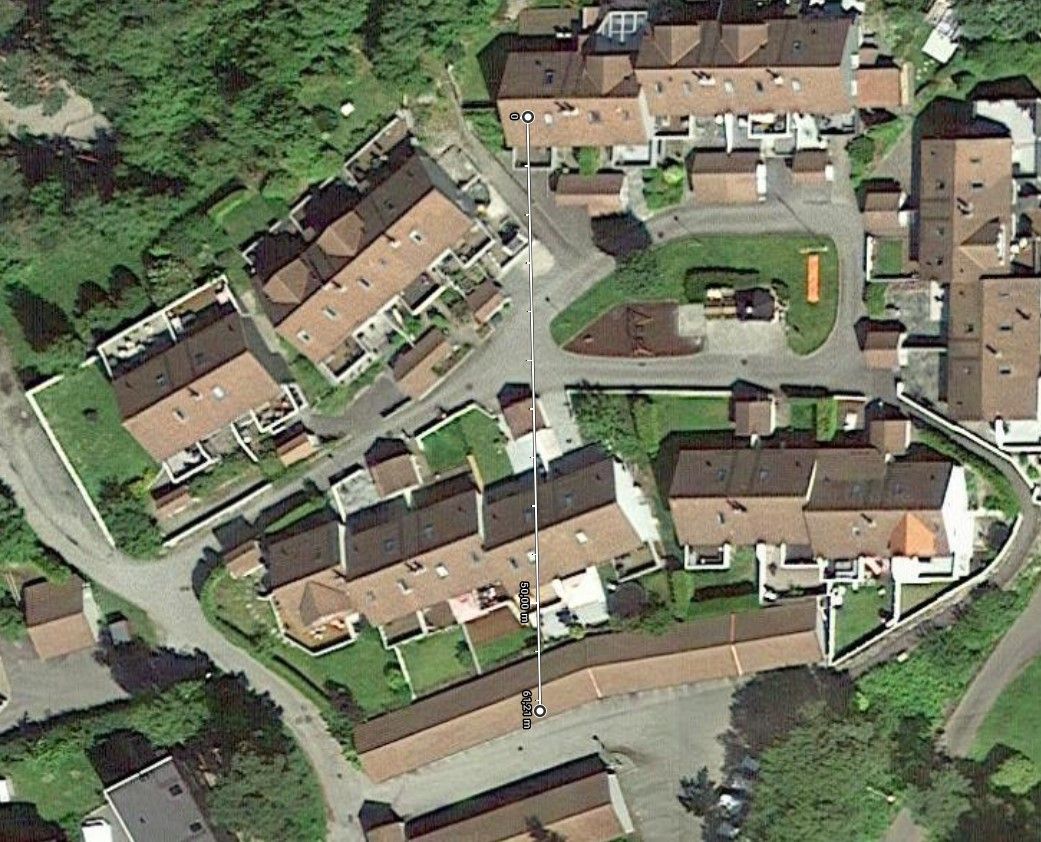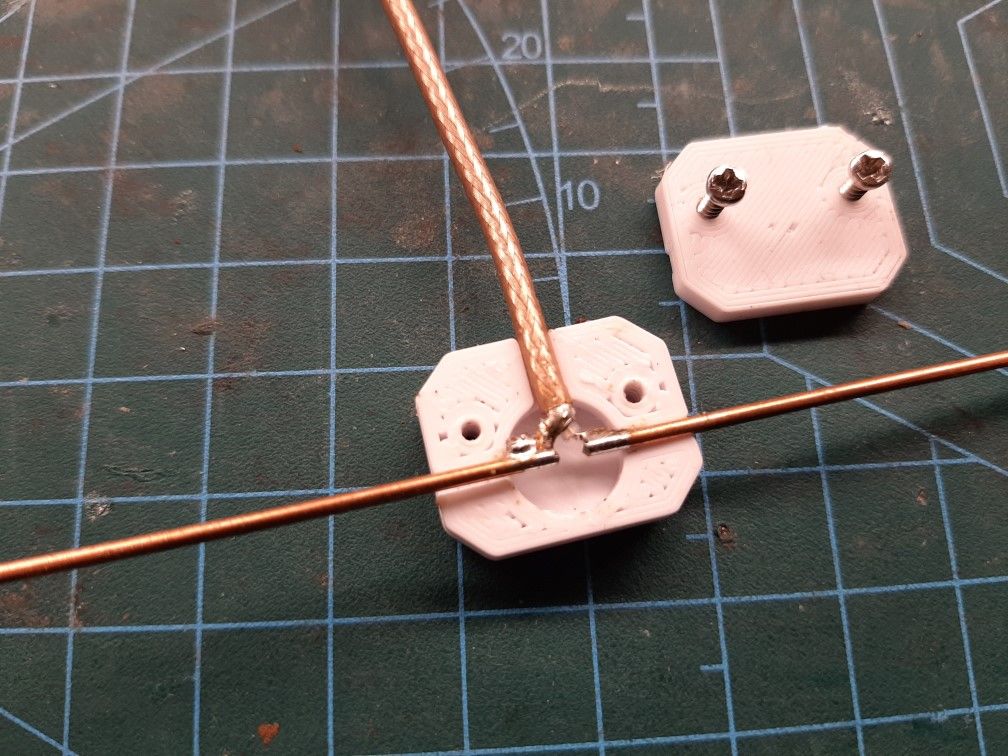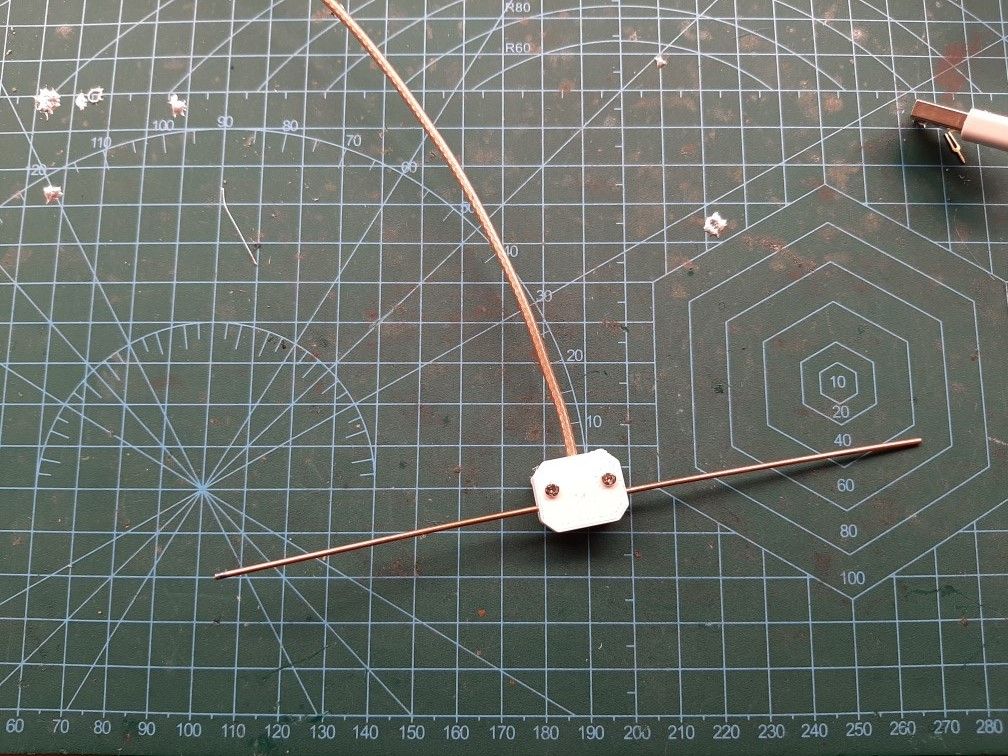RFM69HW - Wow, I didn't expect this range
-
Hi
I just did some testing with my new RPI gateway with 868mhz RFM69HW and dipole antenna, located at the top floor in my 3 floor house. Walking around with a battery node (also HW, but wire antenna) I tested every corner and floor of the house and the connection is solid everywhere, no need for repeater nodes.
Just for fun I took the node outdoor and was a bit surprised when I discovered that I had quite good connection inside my garage as well, that is some 60m away and with houses in between that I was certain would block the signal (see picture). So, it seems I don't need the RFM95 system I planned for the garage after all! I'm very pleased with the result

-
@olka Bravo. Sounds like you're doing everything right. Is it rock solid in the garage as well? It may be reaching there by bounced signals. The dipole is giving you probably 6-8db improvement over just a whip antenna with an undersized ground plane, and the code defaults to maximum tx power. Plus, you're in Norway, so I presume your frequency is something around 410-420Mhz (?), and with your elevated gateway the deck is fully stacked in your favor.
-
@olka Was that two way testing or simply receive on the roving Node ?
Good range result all the same, and nothing to prevent you carrying out further tests at reduced power to establish where coverage tails off.
The garage Node is obviously important to you, how that signal path holds up when it rains and the roof is wet may prove interesting.
-
@zboblamont Just curious: is rain fade significant at 420Mhz? I thought it mostly affected higher frequencies like, for example, 2.4ghz and above.
-
@NeverDie TX power is max on both GW and node, but my frequency is actually 868mhz. During the testing I lost connection only if i placed the node on the ground under my car.
@zboblamont The testing was one way from node to gateway only.
Weather and other factors (like that I was holding the node in my hand) will probably have impact, so I need to do some more testing to determine the reliability. But it looks promising so far.
-
Could you post where you got the dipole antenna from?
-
@olka Understood on one-way to the Node, whether the GW can hear the Node is more critical on the longest signal path.
Standing with a handheld at the garage will give less gain than up in the garage roofspace, but if it's battery powered, easy enough lash it up to run tests... If it is a weak signal at the gateway, perhaps a reflector could push the lobe toward the GW if required...
@NeverDie Attenuation from wet surfaces is less obvious at sub-GHz but can tip the balance on a weak signal, and snow in Norway is not unheard of
-
@electrik I made the gateway dipole from some 1.4mm solid copper wire that I pulled from a cable. After tuning it with an antenna analyzer, I ended up with each element 80.4mm long for 868mhz. This is a bit shorter that the teoretical length, I'm not sure why.


-
There are multiple reasons, but the antenna needs to be sligtly shorter than the calculated length.
One explanation: https://www.electronics-notes.com/articles/antennas-propagation/dipole-antenna/length-calculations-equation-formula.php
-
I just did some more testing, took my node (with a push button) and mobile phone for a late walk. At 160 meters away from my house the connection is still good. At >180 meters away it randomly lost connection. The gateway and node was by no means in line of sight, there were houses, bushes and trees in between.
This is of course not very scientific as the range depends on a lot of factors, but the result is pretty good anyway

-
@olka Which antenna analyzer did you use? Seems like relatively recently prices have come down a lot, so maybe now is a good time to buy one. Just not sure which ones are the good ones, as one can't necessarily trust the specs advertised by the seller.
-
@NeverDie I use the NanoVNA-H. It's originally an open source project so there is a lot of info about it and how to use it, and it's cheap.
-
@olka As @mfalkvidd commented, practical wavelength is less than theory, and depends on diameter among many other aspects.
Wow, those are good results on the further field tests, you may find that the H version was unnecessary overkill but you have them anyway and easily turned down on power if needed.
On the dipole you might look at using a bazooka balun on it or trying a quad or a slim jim
Was very tempted by that NanoVNA when I saw it reviewed, very nice piece of kit indeed which compared well against pro stuff...
-
I started a new thread:
https://forum.mysensors.org/topic/11003/which-vector-network-analyzer-should-we-buyI kindly solicit your recommendations.
-
I use RFM69HW 433 MHz with a wire antenna (straight or spiral). When I start to test my devices, I had a range of about 100 - 150 m (transmitter in my house, receiver outside), so it was very good result for me.
Unfortunately, after building the nodes, now I have the stable range less than 10 m inside my house (I use maximum MY_RFM69_MAX_POWER_LEVEL_DBM (20)). Sometimes it is better, sometimes worse, it depends on various conditions.
(I use maximum MY_RFM69_MAX_POWER_LEVEL_DBM (20)). Sometimes it is better, sometimes worse, it depends on various conditions.
Congratulations on such good results of your gateway, but I'm afraid that stable transmition will be much smaller.